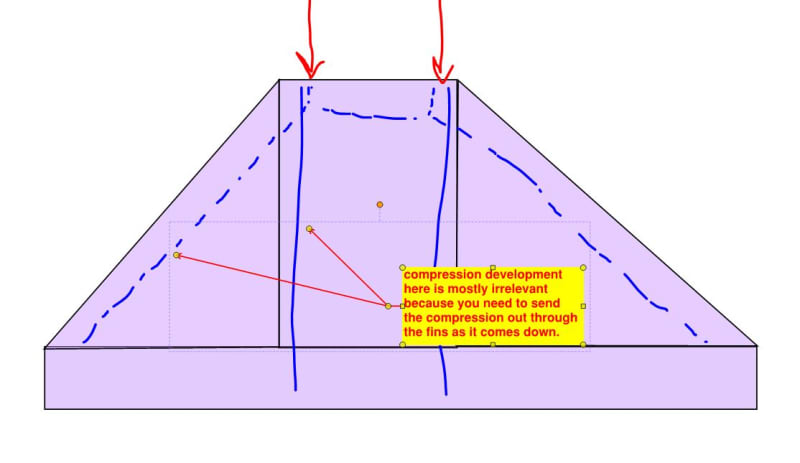Aakalim103
Structural
I have an foundation that has a rather thin bottom slab i.e. 120mm (with a single rebar mesh) but has 8 inclined concrete ribs that connect the column to the bottom slab, one at each column corcer and one at mid point of each column face. The hight of the ribs is almost 500mm. The size of bottom slab is 1.8m x 1.8m. The column height is 1.2m and the size of column is 600mmx600mm. I have attached a picture which shows the foundation.
The depth of the bottom slab is so small that it is almost impossible to provide the minimum development length for the the vertical column rebars. However, I was thinking that for the tradition pad foundation, the critical section for moment is at the base of the column/top of the slab. But in my case, there are ribs that will essentially stiffen the slab and the column and the critical section for moment will be at the start of the ribs i.e the maximum moment in the column will be at the start of the ribs. Do you think in this case it will be justified to provide the anchorage length from the start of the ribs?
The depth of the bottom slab is so small that it is almost impossible to provide the minimum development length for the the vertical column rebars. However, I was thinking that for the tradition pad foundation, the critical section for moment is at the base of the column/top of the slab. But in my case, there are ribs that will essentially stiffen the slab and the column and the critical section for moment will be at the start of the ribs i.e the maximum moment in the column will be at the start of the ribs. Do you think in this case it will be justified to provide the anchorage length from the start of the ribs?


